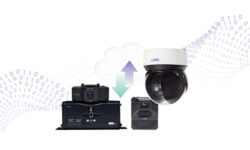Electronic Doors Obstructed Pursuit of Virginia Shooter, Police Say
Police considered using a sledgehammer or explosive charge to break down doors after they were unable to open them due to lack of key cards.

VIRGINIA BEACH, Va. — Police officers responding to last week’s shooting at a municipal building here encountered another enemy in addition to the active shooter: access control.
Engineer DeWayne Craddock went floor-to-floor shooting his co-workers before eventually being killed in a gun battle with police.
Prior to the confrontation, police had difficulty accessing doors on the second floor due to not having the required key cards. They pleaded over radio for the electronic cards and discussed bringing in a sledgehammer, an explosive charge or other means of breaking down the doors, according to AP News.
“That’s definitely a blind spot that this particular shooting has shown,” said Gregory Shaffer, a retired FBI agent and former member of the bureau’s elite hostage rescue team. “We need to make sure that first responders have full access to the building.”
While officers were evacuating people on the third floor, the gunman began to open fire on officers on the second floor, shooting at them through doors and walls. It is unclear how officers were able to eventually get to the shooter.
Key card technology was also a problem for law enforcement during the 2013 Washington Navy Yard in 2013, in which a former Navy reservist killed 12 people before being shot dead, according to a report by the city’s police.
The report also says first responders were able to access secure areas due to one officer who “had the presence of mind” to take a building access card from a deceased security guard.
While access control is integral to securing buildings, it is also important that solutions are in place for law enforcement to effectively respond to emergency and active shooter situations.
“Access control technology, and all security technology for that matter, is critically important to the safety of a building. That said, it must be supported by appropriate policies and procedures,” says Robin Hattersley, editor-in-chief of SSI sister publication Campus Safety. “In the case of access control, organizations must work closely with first responders — police, fire and EMS — to ensure that they have access to their buildings during an emergency.”
If you enjoyed this article and want to receive more valuable industry content like this, click here to sign up for our FREE digital newsletters!

Security Is Our Business, Too
For professionals who recommend, buy and install all types of electronic security equipment, a free subscription to Commercial Integrator + Security Sales & Integration is like having a consultant on call. You’ll find an ideal balance of technology and business coverage, with installation tips and techniques for products and updates on how to add to your bottom line.
A FREE subscription to the top resource for security and integration industry will prove to be invaluable.








